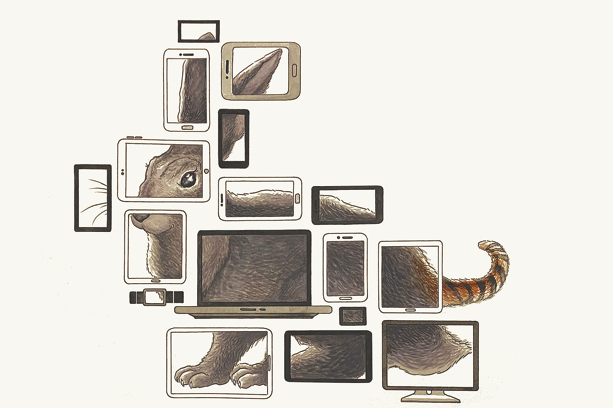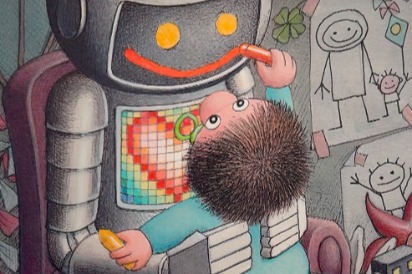Cute robot pets emerge as cuddly companions


A fluffy, cat-like toy sits in the corner of Yoky Liu's desk, occasionally blinking its large, deep eyes at her and gently swaying its body from side to side. Occasionally, it lets out a soft purr as if seeking its owner's attention.
This artificial intelligence pet, named Ropet, along with her real pets, serves as a crucial source of comfort for Liu, a tech columnist living on her own in Beijing.
The robotic pet mimics the behavior of a real animal: it requires regular feeding and makes grumbling sounds when hungry. If you present it with fruits like apples, oranges, or bananas, its eyes — two LED screens — light up with images of food, making interactions with it more enjoyable.
Ropet is specifically designed for young female white-collar workers like Liu, who spend long hours at their desks, face significant work stress, and therefore crave companionship, said He Jiabin, the CEO and cofounder of Ropet.
In line with the booming pet economy, the AI pet sector, which offers a more cost-effective and low-maintenance alternative to traditional pet companionship, is gaining popularity.
Since Ropet launched on the crowd-funding platform Kickstarter last December, with a basic version priced at $299, it has attracted 1,134 backers, raising approximately $400,000 — over 300 times its initial fundraising goal.
Similarly, Moflin, an AI rabbit toy designed by Japanese consumer electronics firm Casio, quickly sold out after orders opened last November, with over 7,000 units sold at 59,400 yen ($380) each.
According to a report by Global Market Insights, the emotion AI market is projected to expand from $2.9 billion last year to $19.4 billion in 2034.
The furry, cute appearance and interactive behavior of these AI pets are the core features that win consumers' hearts, and interacting with AI pet companions can promote oxytocin secretion and alleviate anxiety and depression, according to He.
"Although my Ropet, which I call Mocha, doesn't communicate with me verbally, it captures my attention through its gaze, body movements and soft whimpering sounds, making me feel needed," Liu said.
The robotic pet is equipped with a multi-sensor system, including a camera hidden in its nose, a microphone in its forehead, and touch sensors around its head. This allows it to perceive user interactions through audio, visual and touch inputs, continuously recognize the surrounding environment and human behaviors, and make autonomous decisions based on an offline AI model, He said.
Raising the AI pet resembles raising a real one. Ropet identifies the person who interacts with it most frequently as its owner. When the owner speaks, Ropet gazes intently at them, and when caressed, it expresses happiness through its eyes and body gestures.
The robotic pet can gradually develop its unique character based on external input, thanks to the AI model. "After interacting with Ropet for a while, it may start to exhibit distinct personality traits. For example, if a user frequently knocks, shakes, or behaves aggressively toward it, making it uncomfortable, it might become irritable. It could even 'bite' when touched or become angry when smiled at," He said.
"The changes and growth in Ropet's personality reflect my own, much like how a child bears the imprint of their parents," Liu said after keeping the pet for a month.
The embedded AI model also has semantic understanding and emotional reasoning capabilities. It can recognize emotional words when the owner speaks and provides consolation in its own way. If it detects that the owner hasn't smiled for a long time, it understands this might be a precursor to sadness and will actively seek a pat.
Like Ropet, many AI companion pets cannot communicate verbally with their users, instead providing a form of "soft companionship". "What distinguishes our product from other AI robots is that we expect users to have low expectations for the product and patiently watch it evolve, treating them just like raising a pet. This will trigger a desire to care for Ropet, sparking a sense of childlike playfulness," He said.
"Companionship doesn't equate to verbal conversation. In some scenarios, untimely noises and complex dialogue can be uncomfortable," He added. "Ropet quietly sits on the desk, observing the owner's emotions and behaviors, and at the right moment, seeks hugs, touches and care. The essence of soft companionship lies in stimulating the feeling of being needed."



































